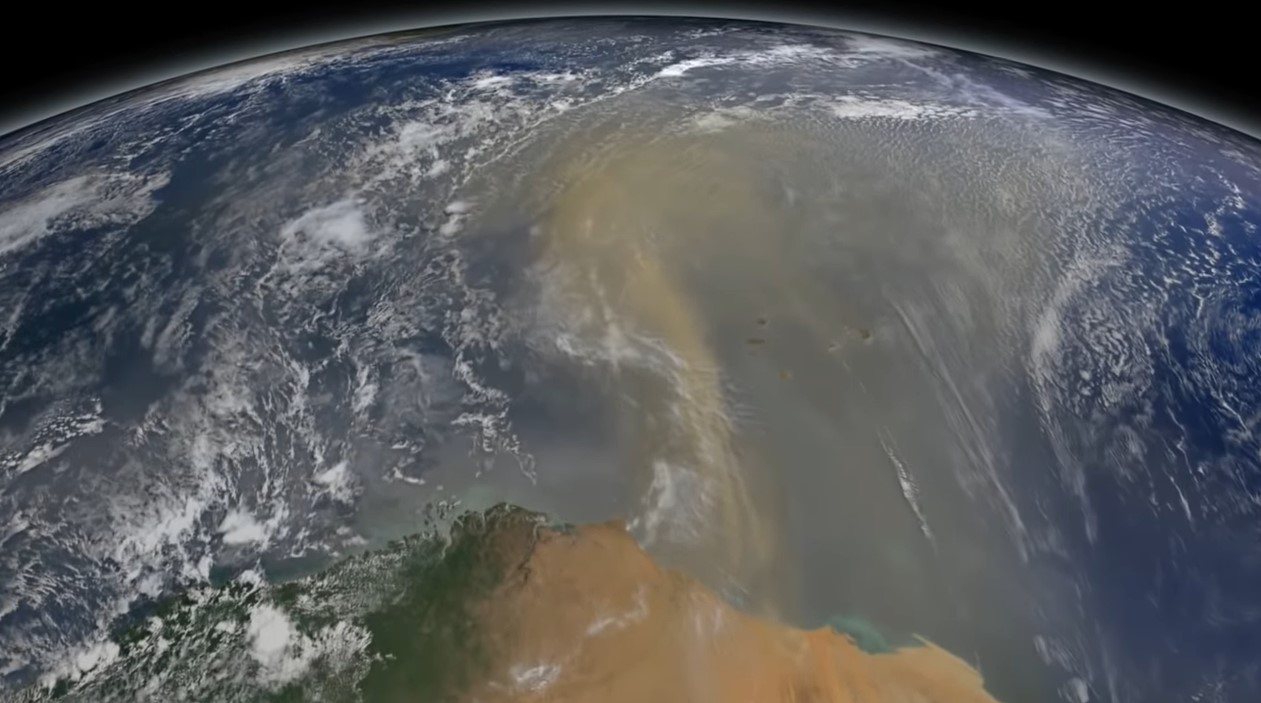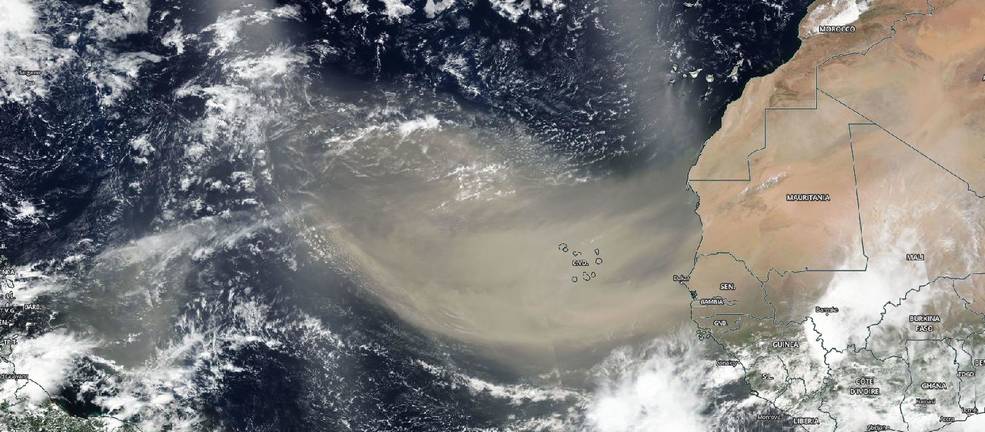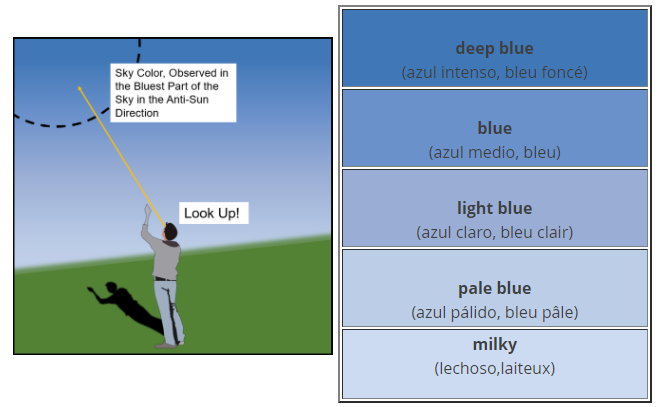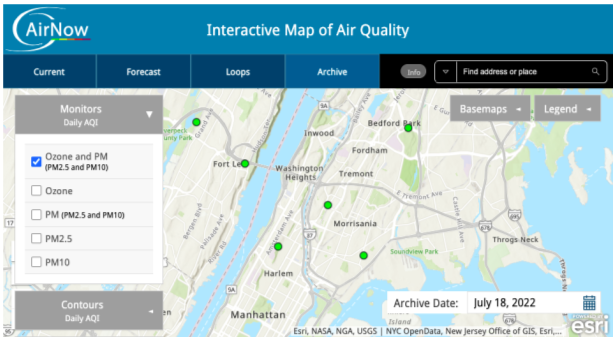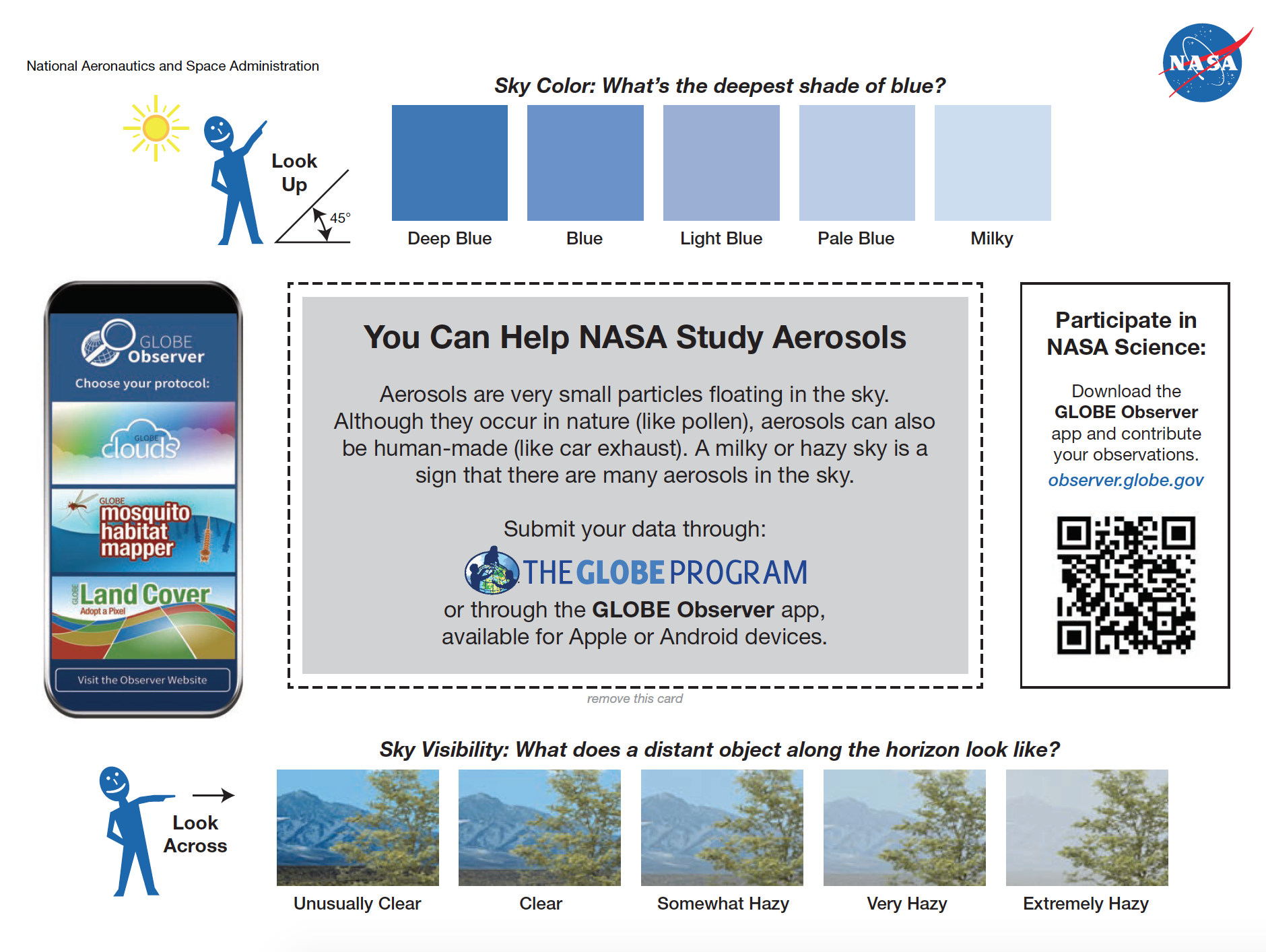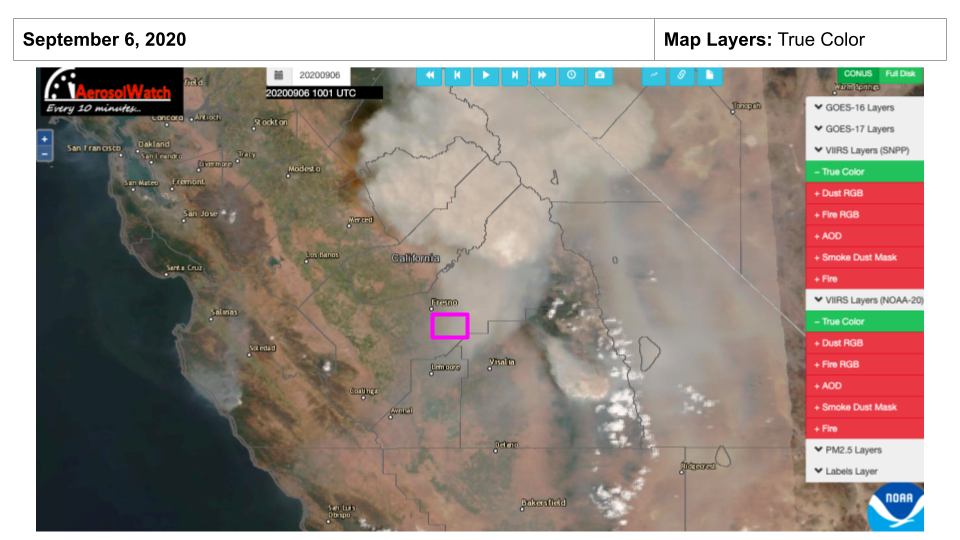Mini Lesson/Activity
Mud From the Sky?
Overview
Students review different maps of wind trajectories to determine to origins of mud-laden rain in the Pacific Northwest.
Student Directions
Mud from the Sky?
In 2015 a strange event occurred in the Pacific Northwest. Muddy rain fell from the sky. Where did the mud come from? Was it soil blowing in the wind? Volcanic ash from far away? Why was the area impacted limited? What conditions came together to drop this mystery rain?
To determine the source scientists needed to know what the particles were made of as well as where they came from. A sample was analyzed and volcanic ash and space dust were ruled out. The very fine particles came from a dry lake bed, but where?
Scientists used a method known as trajectories to figure out where the wind came from, including what areas the wind had passed over. The rain event was an expected weather system and not part of the mystery.
Focus on the maps rather than the graphs below them.
Trajectory 1 shows where the wind that arrived over Pendleton, Oregon on February 6, 2015 passed over.
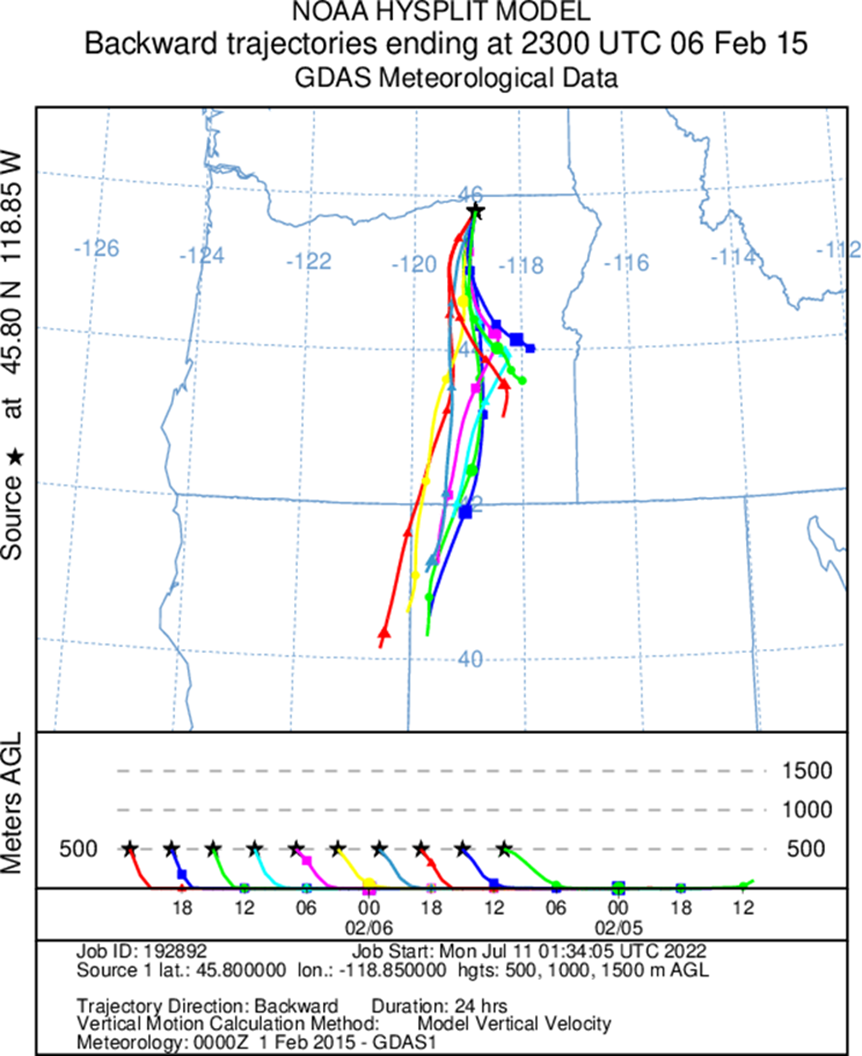
Trajectory 2 shows where air that started in Reno, Nevada passed over.
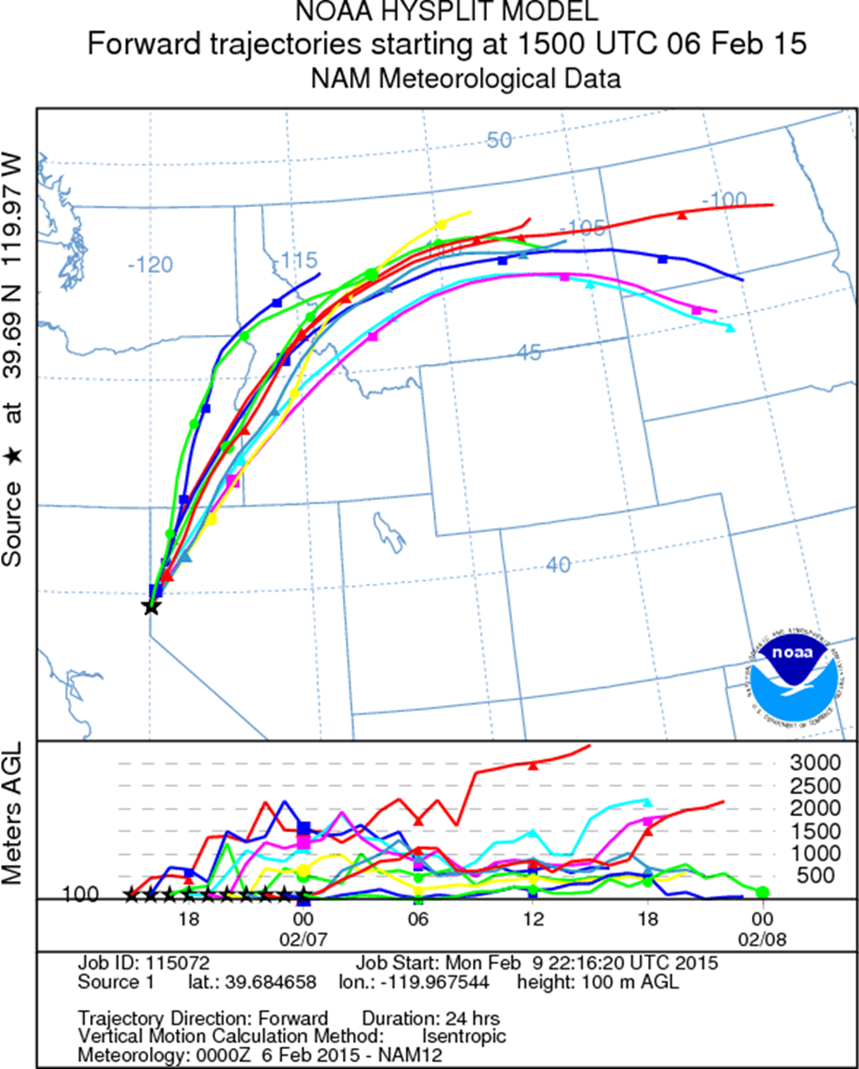
Trajectory 3 shows where air that passed over a point in south central Oregon went.
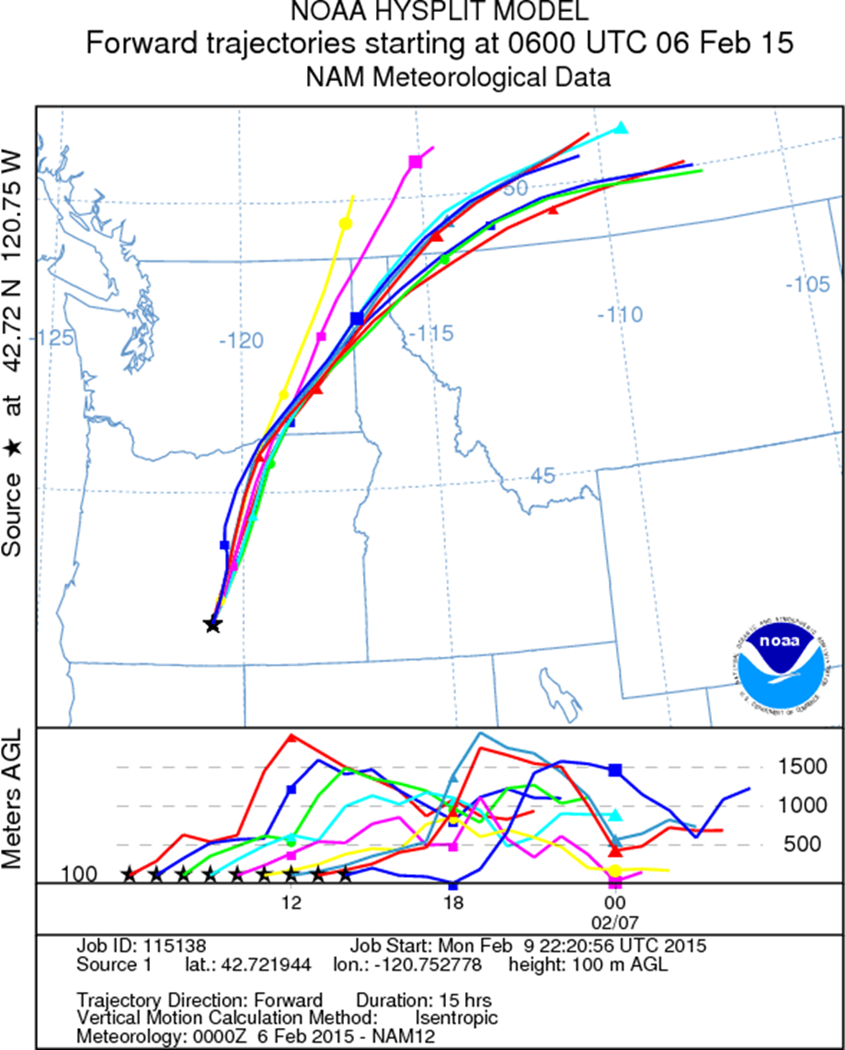
Steps:
- Check with your instructor on how to submit your answers.
- Trajectory 1 is a backward trajectory, while 2 and 3 are forward trajectories. Explain what this means.
- Identify the similarities between all three trajectories?
- Explain the difference between all three trajectories?
- Once scientists knew the material came from a dry lake bed, how could these trajectories be used to find the source?
For a summary of what really happened, see the article below:
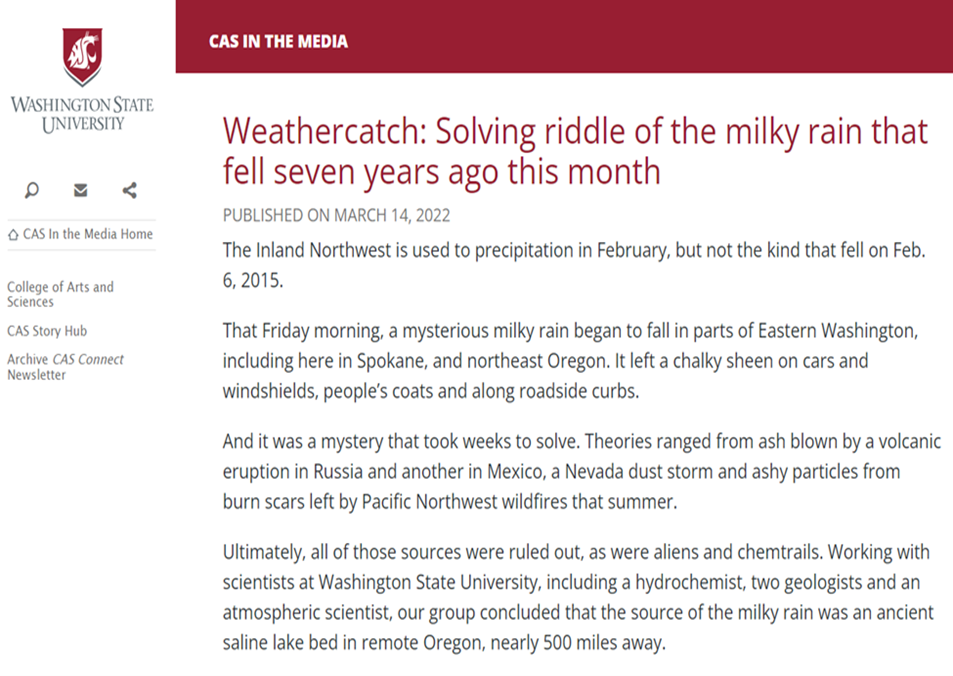
Sources:
- Air Resources Laboratory - HYSPLIT - Hybrid Single Particle Lagrangian Integrated Trajectory model. (2022, January 4). https ://www.ready .noaa.gov. Retrieved August 23, 2022, from https://www.ready.noaa.gov/HYSPLIT.php
- Loyd, N., & Weiford, L. (2022, February 24). Weathercatch: Solving riddle of the milky rain that fell seven years ago this month. The Spokesman-Review. Retrieved August 30, 2022, from https://www.spokesman.com/stories/2022/feb/24/weathercatch-the-riddle-o…
Teacher Note
Teachers, these mini lessons/student activities are perfect "warm up" tasks that can be used as a hook, bell ringer, exit slip, etc. They take less than a class period to complete. Learn more on the "My NASA Data What are Mini Lessons?" page.
Teachers who are interested in receiving the answer key, please complete the Teacher Key Request and Verification Form. We verify that requestors are teachers prior to sending access to the answer keys as we’ve had many students try to pass as teachers to gain access.



